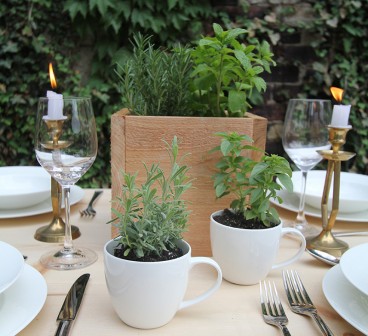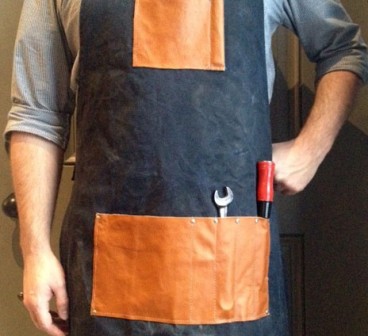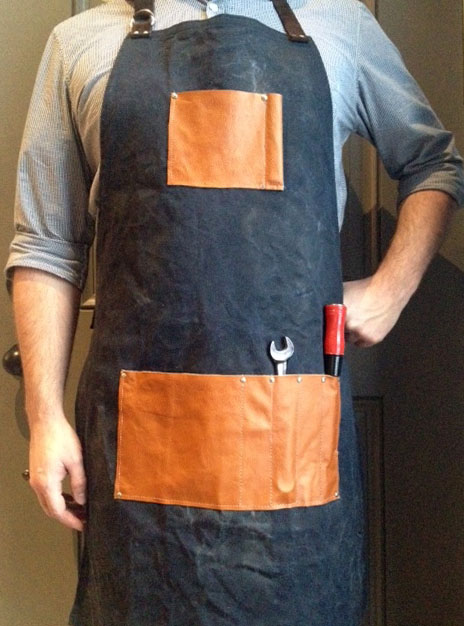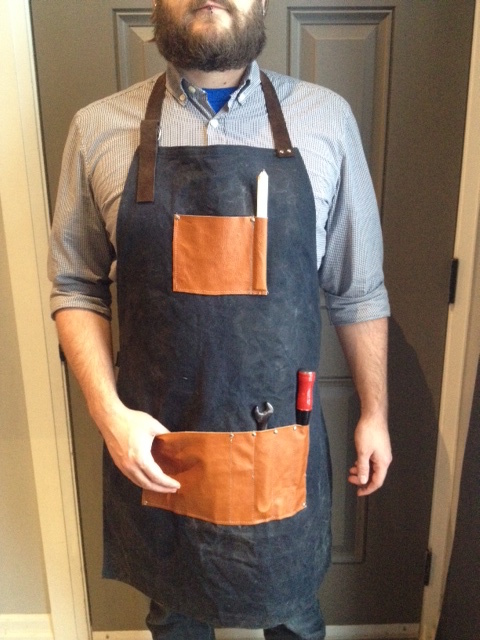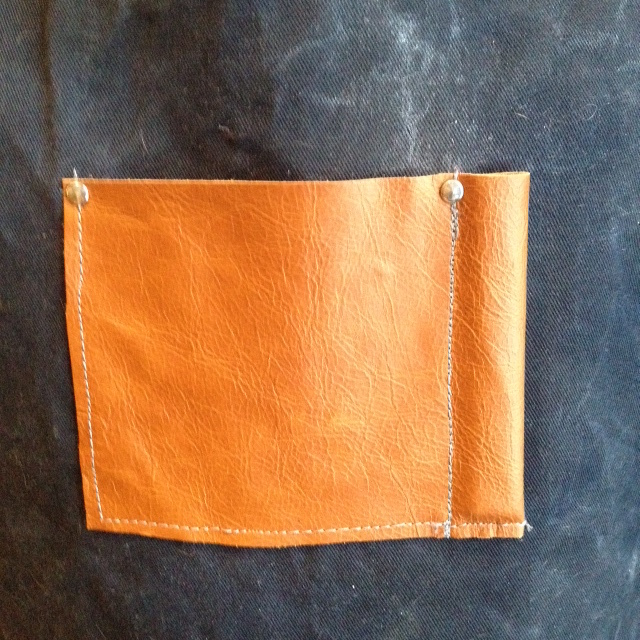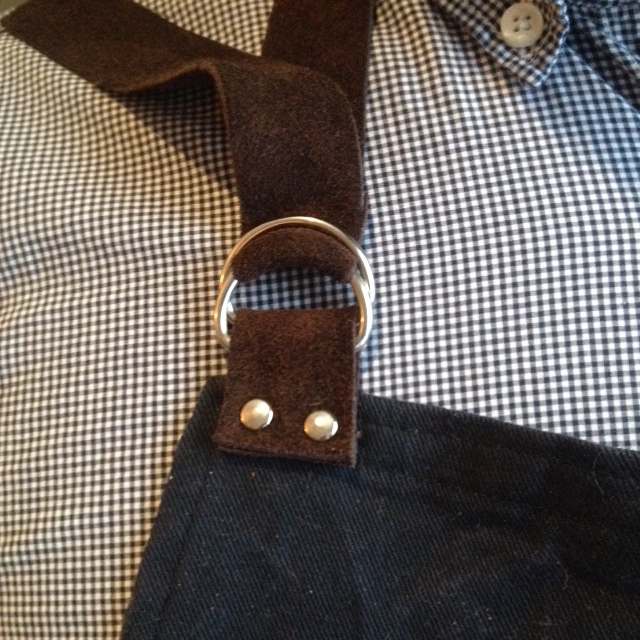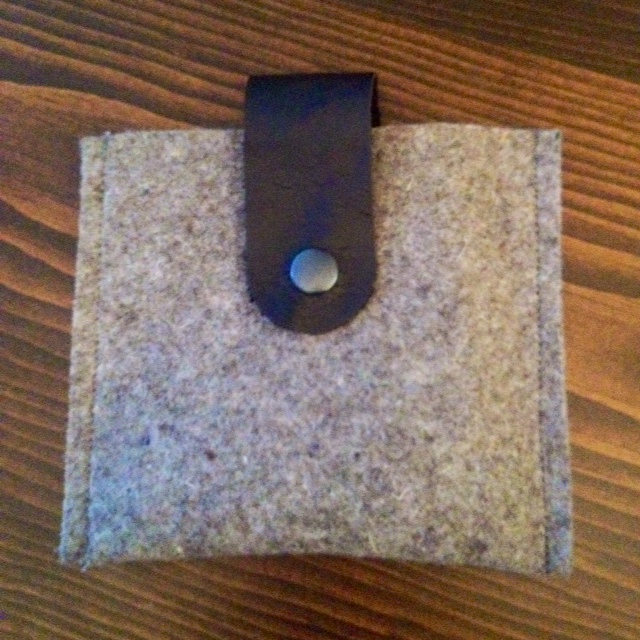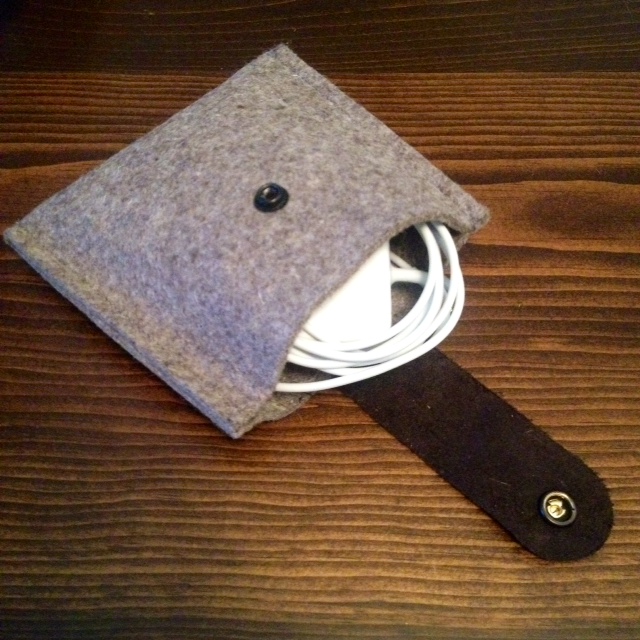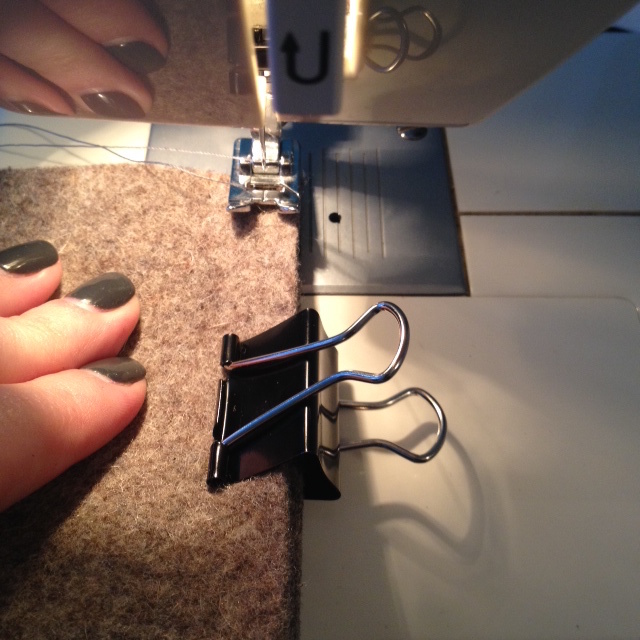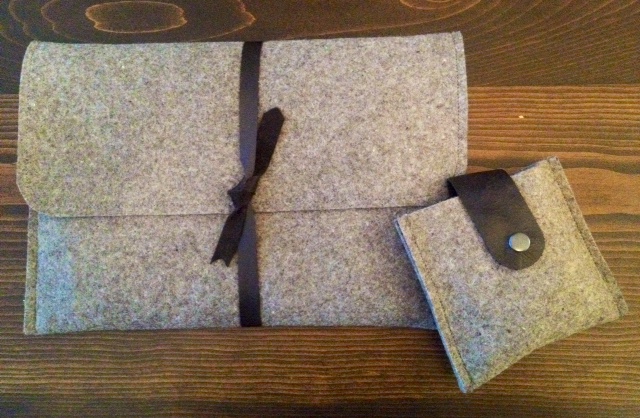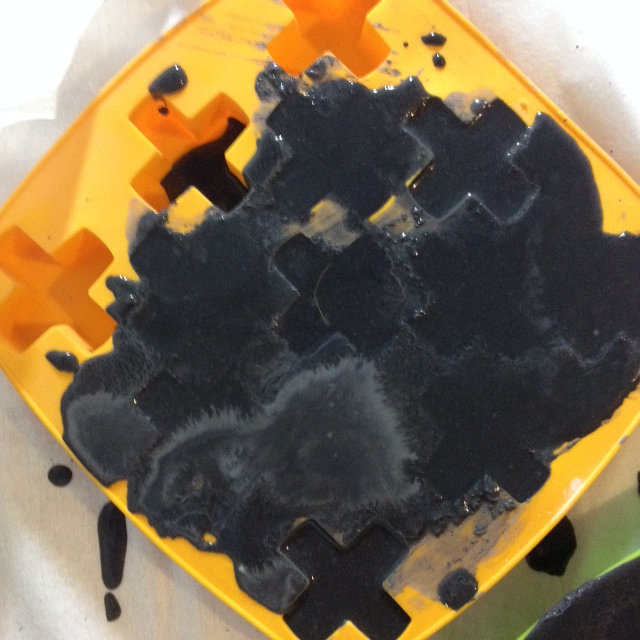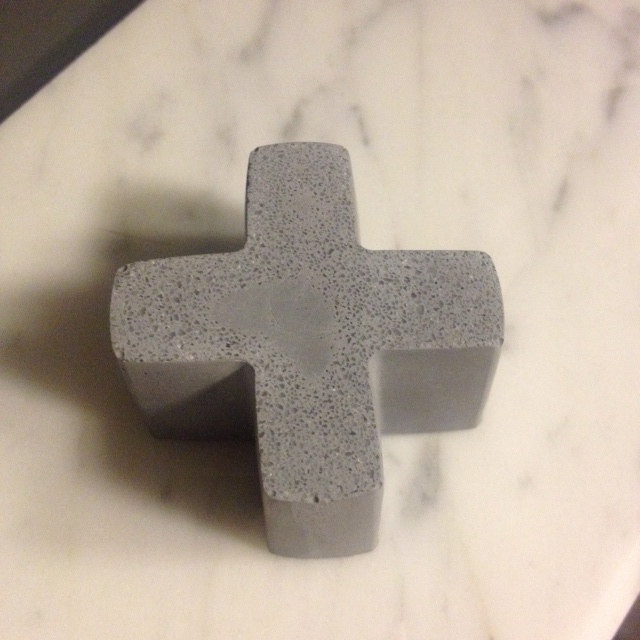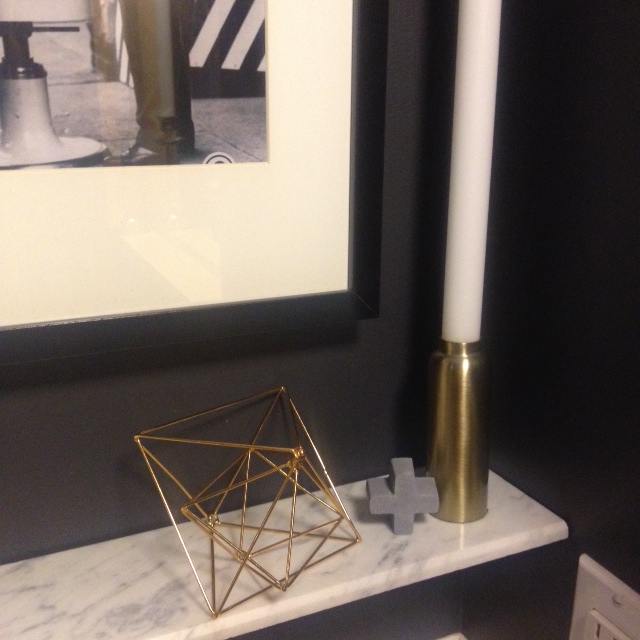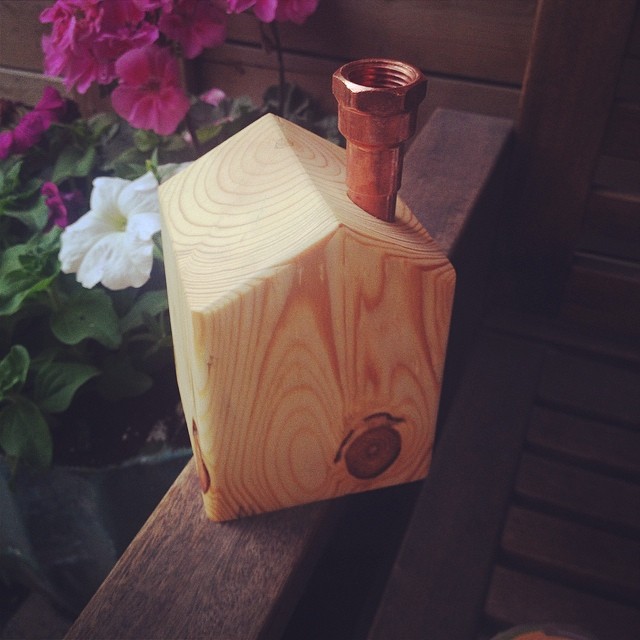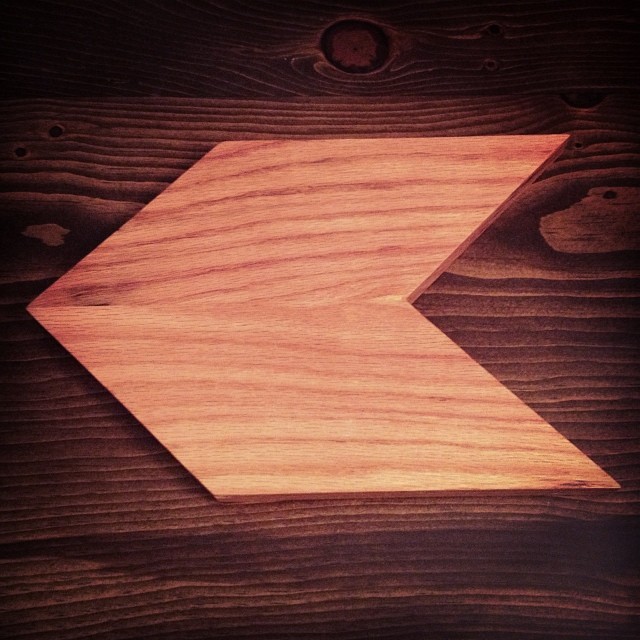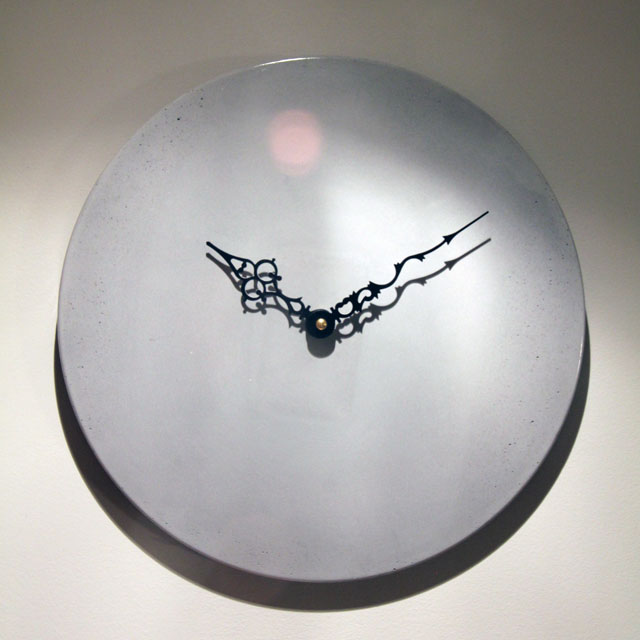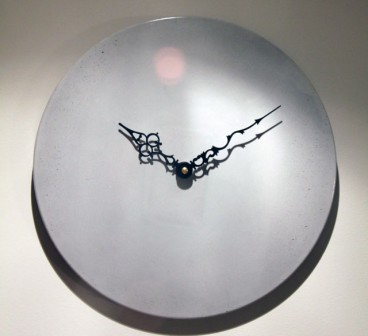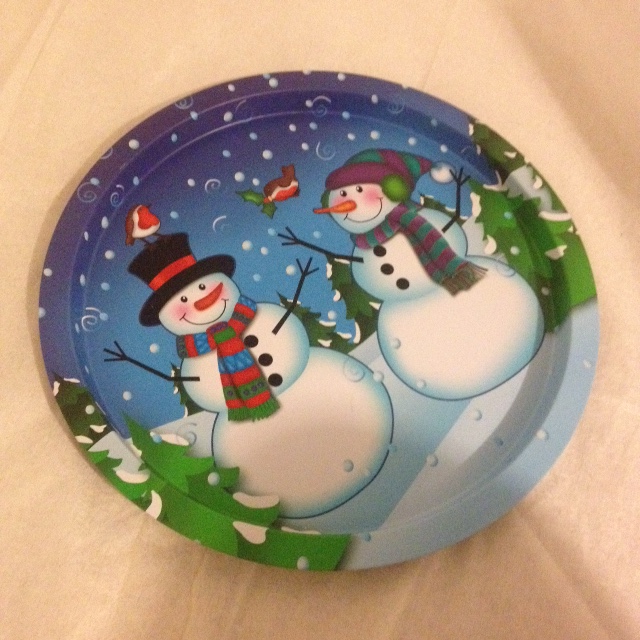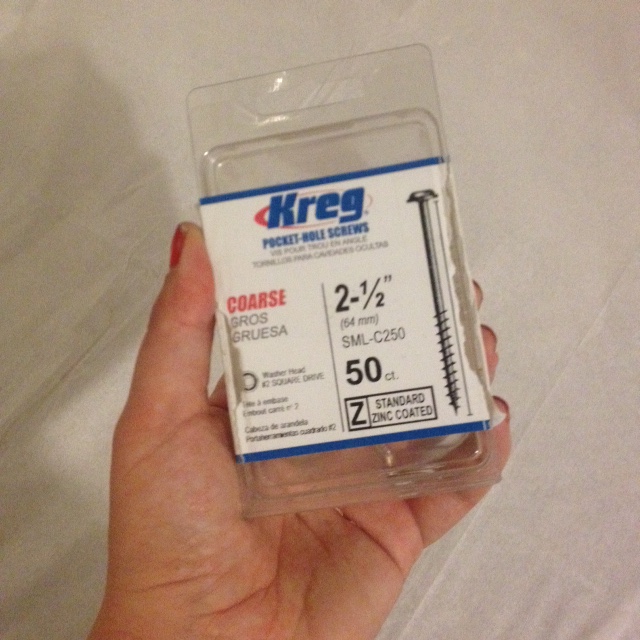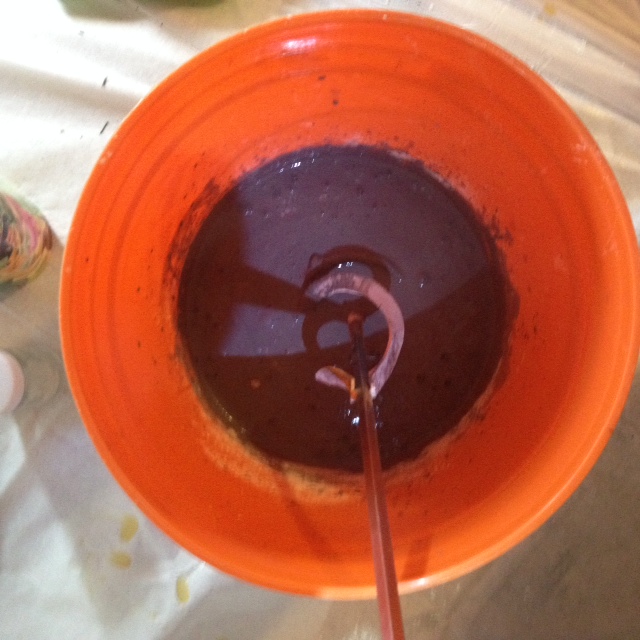This is a very exciting day! The Summer 2015 edition of Merry Mag is out! Head over to MerryMag.com to check it out in all its glory! From handmade decor, DIYs and everything you could possibly need to entertain this summer. You won’t want to miss out!
Tag: diy
Herb Centerpiece – Merry Mag Sneak Peek
This is a sneak peek at a project you’ll see in the awesome summer edition of Merry Mag! Make sure you head over to MerryMag.com on June 8th for a huge helping of summer inspiration. Believe me, you wont want to miss out!
Easy Outdoor Pillows
May rolled in like a hero and brought some fantastic weather. Off went the pants and on went the shorts! The city was flooded last weekend with legs and arms and all sorts of skin that had not seen the light of day since September.
Not to be outdone by the short wearing masses, I dragged out our daybed mattress and headed outside. Two minutes into my afternoon book and a cocktail on the daybed, I remembered the promise I made to myself to sew some new outdoor cushions. The ones I currently had were either too stuffed and hard or too empty and flat. I was Goldilocks in a house full of uncomfortable cushions. Continue reading “Easy Outdoor Pillows”
DIY Notebook Tool Roll
Hey, I don’t know if you’ve noticed the author name on this post or on the homepage but it’s not Kristen. Yeah, I know you don’t see the author name of El Granto here a lot. Frankly Kristen’s just better at it. But I’m here now and I’m all you’ve got for today, so you better like it! Continue reading “DIY Notebook Tool Roll”
Waxed Cotton & Leather Mens Apron
This project is about six months in the making. I intended to make a mens canvas and leather apron, and have it ready to present to El Granto for our 3rd anniversary (the leather anniversary). That came and went, and I hadn’t moved beyond…well…thinking about making it. Fast forward to the beginning of February. Winter had officially set in in Canada, and it was so bloody miserable, one couldn’t fathom leaving the house. There is only so much Netflix and takeout a girl can handle before snapping and dragging out the sewing machine.
Only six months late, I was finally able to give El Granto his waxed canvas and leather apron. Perfect for wrenching on his motorcycle, or tinkering in the garage.
How To:
Cut a 36 1/2″ x 25 1/2″ piece of canvas. Fold it in half lengthwise. Measure 5 3/4″ from the fold on one short side. Mark with chalk. Measure in 15 3/4″ in on the long side, starting the measuring from the same short end you previously marked. Draw a concave curve between the mark on the short side and the mark on the large side. Cut through both layers of fabric along your curve.
Using an hot iron, roll and press a 3/8″ double hem (fold in 3/8, iron, then fold it over again and iron) on all the raw sides. Top stitch a 1/4″ hem all around the edges with a matching thread. That is now the base of your apron complete.
Using a mixture of melted beeswax and paraffin, wax the canvas. **I will be back with a whole post later in the week on how to wax canvas**
Cut your leather pieces to size (see cut list below). On the small pocket of leather, fold in one short side 1 1/4″. Stitch through both layers of leather on the folded side, 1″ in. This will make the pencil pocket.
Place the small pocket 4″ below the top of the apron, and centered. Topstitch with a 1/4″ hem along the pencil pocket stitch line, then the bottom and the other side. This pocket will hold a carpenters pencil or sharpie, as well as screws, nails or nuts and bolts.
Place the large bottom pocket 18″ from the top of the apron and centered. Topstitch (1/4″ again) around the sides and bottom of the large pocket. Measure in 1 1/2″ from the right side hem of the large pocket, and mark. Mark again 1 1/2″ from the first marked line. Continue this another two times.
Topstitch along the marked lines. This will make the smaller pockets to hold wrenches, screw drivers and other long skinny tools. The larger pocket will hold an assortment of miscellaneous stuff (i.e. a rag, a notebook, an Allen wrench etc.)
Fold the D ring pieces of leather (see measurements below) in half and punch two holes on the end of each piece. Punch two corresponding holes in one side of the apron as well as one side of the top of the apron. Place two D rings on each piece of leather. Line the holes in the pieces of leather with the holes in the apron. Place a rivet post through each set of holes, and using a rivet tool, hammer in place. [Rivets are easy! Just place the post of the rivet through your materials, then set in the concave rivet setting tool. Place a rivet cap on top of the post. Using the setting part of the rivet tool, hammer the rivet in place.] The D rings will allow you to thread a piece of leather between them, to easily secure the leather apron straps.
On one end of the neck and waist apron strings fold the ends over 1/2″ and punch two holes. Rivet to the neck strap to the top of the apron, on the opposite side of the D rings. Rivet the waist strap to the opposite side of the D rings.
Punch holes and rivet where the pockets meet the apron. This will ensure a long life to the apron, and take the abuse your man is sure to hand it.
Thats it! The waxed canvas and leather will weather and patina, growing nicer with age. The man in your life will thank you for making him such an awesome man apron, and for saving his clothes from motorcycle grease or saw dust. Not to mention having a place to stash a tape measure or screw driver.
Now…I want to make one for myself.
SOURCE INFO:
Materials:
Navy Blue Cotton Canvas – Designer Fabrics
Scrap leather – Designer Fabrics (all pieces were purchased from their scrap and trip leather bins, for a grand total of $1.50 spent!)
Bees Wax – The Bee Shop
Paraffin Wax – Michaels
Rivets – Michaels
1″ D Rings – Amazon
Cut List: (for a large mens apron)
36 1/2″ x 25 1/2″ piece of canvas (body of apron)
6 1/2″ x 13″ piece of leather (large pocket)
5″ x 7 1/4″ piece of leather (small pocket)
2 – 1″ x 2 1/2″ piece of leather (D Ring holds)
1″ x 25″ piece of leather (neck strap)
1″ x 30″ piece of leather (body strap)
Tools:
Fabric Scissors
Measuring Tape
Square
Leather Punch
Rivet Tool
Double Boiler
Blow Dryer
Difficulty Level (on a scale of 1-5):
Total Time: 1 day
Total Cost: $27
DIY Felt & Leather Laptop Cord Pouch
Happy Friday! I’ve got a quick little project for you today. I promise to not take up much of your time, because WEEKEND.
Have you checked out the felt and leather laptop sleeve I made earlier in the week? After finishing the sleeve, I still had a ton of extra felt and leather, and opted to make a quick little pouch for my laptop cords and cables.
For the amount of cordless devices in my life, I certainly have a hell of a lot of cords. All of which seem to be tangled into a heap. Why are cords like that? They go in all organized, and then you pull them out and they have gotten themselves all tied up it knots, like some weird cord orgy.
Not anymore cords! You will stay all neat and tidy in your little cord house. The pouch holds my MacBook Air charger and an extra iPhone charger. Huzzah!
Here is how I made it:
The pouch is simply constructed out of one long felt rectangle (6″x11″). The rectangle is folded in half, sewn on each side, and then closed with a scrap piece of leather.
The leather has a snap on one end, and the other end is sewn to the back of the pouch.
Snaps are a lot easier than you would think. All that is required is a snap starter kit which comes with a punch, a setting tool and a little round piece of metal to hold your snap while you’re setting it. Follow the directions on the kit, and you are off to the races.
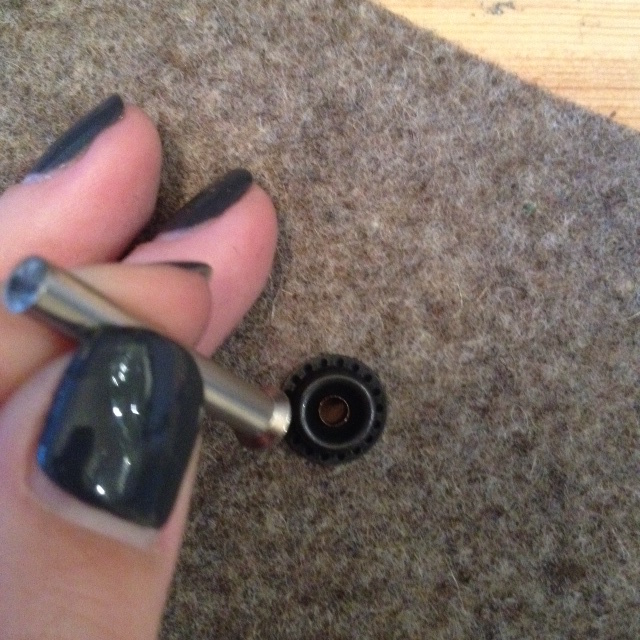
After the snaps were installed, and the leather strap sewn on, I topstitched the sides of the pouch with grey upholstery thread, and 1/4″ seam. (TIP: use binder clips to hold the felt in place.)
It’s a perfect accompaniment to my felt laptop sleeve.
What do you think?
Happy Weekend!
SOURCE INFO:
Materials:
Industrial felt – 3/8″ thick – The Felt Store www.thefeltstore.com
Scrap leather – Designer Fabrics
Snaps – Designer Fabrics
Cut List:
6″ x 11″ piece of 3/8″ thick felt
2″ x 6″ piece of leather
Tools:
Scissors
Measuring Tape
Square
Marker
Round objects (thread spool, cup etc.)
Thread
Difficulty Level (on a scale of 1-5):
Total Cost: $5
Disclosure: The Felt Store sent me a sample of their felt, with no obligation or compensation to post about it. As always, all opinions, typos and overuses of the word “awesome” are my own.
DIY Felt & Leather Laptop Sleeve
I recently started commuting to the office with a laptop. While having a laptop is fantastic for working remote, the actual commuting with the laptop was a bit of a pain. I was hauling it in a thin nylon sleeve, in a laptop backpack. If you have ever tried to ride a crowded subway with a backpack, you will know that it sucks. You have to remove your backpack (otherwise you hit poor strangers with it). This leaves you holding onto it. If you are a girl like me, you will also be holding onto a purse…and a coffee. This leaves me with one hand carrying a backpack, with my purse tucked under that same arm, and my coffee in the other hand. That leaves me exactly no hands to hold onto the subway pole. A week of this, and I almost tossed hot coffee onto innocent strangers and/or almost fell on my ass at least twice.
Sick of arriving at the office with coffee on myself, I took matters into my own hands and created a simple felt laptop sleeve.
This felt sleeve offers a ton of protection to my MacBook, and allows me to toss it into a large purse for commuting to the office and client meetings. No more laptop bag or backpack!
Here is how I did it:
I have the 13″ MacBook Air. I took a few measurements, and decided a 14″ one piece tri-fold sleeve, with 1/4″ hems on either side. This would allow for easy laptop removal, but still keep my laptop nice and snug. I got some some 3/8″ industrial felt online from The Felt Store. I have never seen thick felt like this in fabric stores, so your best bet is to buy it online and have it shipped. I took a large framing square from my workshop (this may be a woodworking tool, but it is super helpful for sewing, leather crafting etc.) and squared up my piece of felt on two sides. (if you don’t start with a nice square straight piece, you will have a heck of a time marking out your pattern.)
I marked out a 14″ x 25″ rectangle on the felt using my square and a fine tipped felt marker. Using my big sharp sewing sheers, I used long smooth cuts, and cut out my piece of felt.
I wanted to add in a little hand hold for easy laptop removal. I marked a 3″ wide and 1″ deep notch into one end of the felt (on one of the short sides). I offset it to one side. Rather than having square corners for the notch, I used a small circle object (a pod from my Nespresso machine!) to trace a rounded corner. Using the sharp scissors again, I cut out the notch.
Using a larger round object (this time a drinking glass) I rounded the corners on the other short side of the felt, which will be the top flap.
I top stitched around the short side with the notch. Using my sewing foot as a guide, I top stitched 1/4″ in with grey upholstery thread, making sure to lift my foot at the 90 degree corners, and going slowly around the curves. I then continued to top stitch around the entire piece.
Next, I folded the notched end up 9″, and using binder clips, holding the folded end to the rest of the felt so it makes a pocket. I topstitched with the same 1/4″ seam down the side of the folded pocket, moving the binder clips as needed.
I did the same for the other side, and the felt sleeve is now complete!
For closure, you could install a few buttons, snaps or buckles. I oped for a simple strip of leather tied in a knot. I purchased some scrap leather, and cut a strip roughly 1/2″ wide by 26″ long.
I cut the ends to a point on one end, and an inverse point at the other, and tied it around the sleeve.
Not too shabby for a half hours work. What do you think?
SOURCE INFO:
Materials:
Industrial felt – 3/8″ thick – The Felt Store www.thefeltstore.com
Scrap leather – Designer Fabrics
Cut List: (for 13″ Apple MacBook Air)
14″ x 25″ piece of 3/8″ thick felt1/2″ x 26″ piece of leather
Tools:
Scissors
Measuring Tape
Square
Marker
Round objects (thread spool, cup etc.)
Thread
Difficulty Level (on a scale of 1-5):
Total Cost: $25
Disclosure: The Felt Store sent me a sample of their felt, with no obligation or compensation to post about it. As always, all opinions, typos and overuses of the word “awesome” are my own.
Concrete Swiss Cross
In the modern and Scandinavian home scene you notice a lot of similar trends. Monochromatic palettes, clean uncluttered design, negative space, candles, wood, black and white etc. One other motif you will note is Swiss crosses. They’re on blankets, pillows, art and accessories. Find a scandi home pic on Pinterest, and play the find the Swiss cross game. Why is this motif so popular? It’s simple, bold and classic. Not a design fad, but a timeless design element.
I’ve been Scandinspired as of late, so when I spotted X silicone ice cube trays at Ikea, I saw them not as X’s but as +’s. With silicone + tray in hand, I used some leftover concrete from my concrete clock project to make concrete Swiss crosses.
I poured excess grey concrete into my silicone ice cube trays, and covered with plastic. I left them to cure overnight, then easily popped them out of the silicone mold. [see how to mix & pour the concrete here.]
Any excess concrete was lightly sanded off, and the crosses were lightly sanded the edges of the +’s so they would stand up easily.
Not only did I use up my excess mixed concrete, I also made a cute decor item. The little Swiss crosses look sweet in my black and white powder room.
Working with concrete and silicone molds was incredibly easy. I am now on the hunt for other cool silicone molds. One of those sphere ice cube trays perhaps?
SOURCES:
Concrete – Buddy Rhodes 10lb Artisan Mix
Silicone Ice Cube Tray – Ikea
See post on mixing the concrete here.
Difficulty Level (on a scale of 1-5):
Total Cost: $3
10 Awesome Handmade Gifts
Holy cow, December is upon us, and I am slacking in the Holiday department. I better get off my tush and start making my handmade gifts for this year. If I am this far behind in my holiday gifting, I thought you may need a hand. I have rounded up a few of my favorite DIY gift projects that we have made in the last few years. Happy crafting!
Kristen’s Awesome List of Handmade Gifts
Maple and Oak Cutting Boards
These boards are a fab gift for the foodie or the entertainer. You can make them a traditional shape, or simple & modern. This gift also goes beyond the holidays, and is great for a house warming. Check out the how to here.
Cutting Board Oil/Wax
While you’re making your cutting board, make up a batch of Cutting Board Oil/Wax and a pretty tag, and give it along with the cutting board. This oil/wax is the perfect wood conditioner for all your wooden items. From Grandmas vintage salad bowl, to your every day wooden spoons. See the how to here.
House Shaped Candle Holder
This makes for a perfect housewarming or hostess gift. Its a small gift that you can give in addition to a bottle of wine, or just a little something for a teacher or coworker. Check out the how to here.
Beer Can Carrier & Custom Pint Glasses
This is the gift for the beer lover in your life. You know you have one. Pair it with their fave beer, or better yet some new microbrews. Check out the how to here.
Wood & Nail Bottle Opener
This is another good man gift. Its also a small enough that it can slip easily in a stocking, or pairs well with a six pack at a holiday party. Check out the how to here.
Chevron Cheese Board
Another awesome board, but this time just for cheese. This chevron cheese board is perfect for setting up a cheese tray. You can arrange one or multiple boards along the center of a table and let your inner foodie out. This is the perfect gift for the entertainer in your life. Pair with a nice cheese knife, and a bottle of wine, and expect to be invited over for the next party. View the how to here.
Custom Door Mat
A custom door mat is a great for the newlyweds, or a first time homeowner. Heck, its even a great gift for the in-laws. For a classic look, use a monogram, or for the hipster in your life consider a cheeky saying. Check out the tutorial here.
Custom Mailbox
A custom mailbox is another great home owner gift. You can personalize it with their address, or their family name. See the how to here.
Wooden Bath Table
This is a gift perfect for the overworked, stressed out people in your life. Bathtime (when you’re over the age of 8) is a time for relaxation, and a moment of peace and quiet. Pair the bath table with some swanky bath products or a fluffy robe and a bottle of time, and the Moms, sisters, or athletes in your life will love you forever. Bonus points if you offer to take the kids/dog/whining husband out of the house so they can really enjoy their bath. Check out the super simple instructions here.
Concrete Clock
Last but not least is the awesome concrete clock project we showed you earlier this week. It would be a great gift for your secret santa, your city dwelling brother, or surprise your spouse with it for their office. See the full tutorial here.
I hope these ideas help you out with your handmade gift ideas! Happy gifting!
DIY Concrete Clock
I’m so excited to share today’s project! It’s something I’ve wanted to make for over a year. When I first started talking to Jeremy at Buddy Rhodes about making our concrete counters, he told me to take a look at his portfolio of work. He wanted me to be inspired by the awesome stuff you could do with artisan concrete, and to brag a bit about how awesome he is.
One of the first projects of his that caught my eye was a series of concrete clocks. I sent him an email saying something along the lines of “omggggg I need to make a clock!” said in over excited girl squeal. He kept saying clocks were easy, and after we pour our kitchen including a badass one piece waterfall countertop, I will be able to make a clock in my sleep. But clocks seemed like such a big project. So much so that I never tried to make one. Then a few buckets of Buddy Rhodes 10lb artisan mix showed up at my door a few weeks ago, with a few curse words gentle push from Jeremy to get off my butt and make something. So I made this:
DIY concrete clock! It was so easy. Really truly so easy. Here’s how I did it:
Milwaukee M18 Hammer Drill + Mixing Paddle + Small Bucket + 10lbs Buddy Rhodes Artisan Mix
I sourced a mold in a shape I liked. I went with a $1 Christmas Snowman cookie tray from the dollar store.
The only other item I used for my mold was an empty plastic screw container. It was the perfect size for a inset in the back of the clock for my clock works. Note, you don’t even have to do this, your clock works can totally stick off the back of your clock.
I mixed up a small batch of the BR mix, with a teaspoon of coal coloring & a dash of water reducer. This is also optional. The water reducer will let me put less water in the mix, but still get a nice workable mix. I used coloring to get a grey color, but the BR mix is bone white, and If you don’t want to tint it, you don’t have to. The mix has no large aggregate (gravel) so it can be made into tiny or thin molds without issue. I mixed up my concrete with a paint mixing paddle from the hardware store. My Milwaukee Hammer Drill made quick and easy work of mixing.
Once it was to the viscosity of a milkshake, I poured it into my mold. I filled it 3/4 full. I inset in the screw container, and weighed it down with a jar of Vaseline (Vaseline can be used as a mold release, so I had it on hand. I’m not a creepy weirdo who keeps Vaseline in their basement workshop for no good reason).
I gave it a shake to level everything out, and a bit if vibration from a palm sander. I covered with plastic sheeting, and left to cure in our nice warm basement.
I had a bit of extra mix left over, and I also had some simple silicone molds nearby, so I poured the excess in to them. (I will show you how they turned out next week.)
The next day I unmolded it by very carefully flexing the tray until it popped out. This is what it looked like after unmolding.
It was almost perfect, except you could just slightly see the outline of the snowman design. To remedy this I lightly wet sanded with 400 grit diamond hand sander. In hindsight, I would have not sanded. The finish was even more perfect before sanding, and I don’t think you would have seen the snowman after a quick buff. Where I did need to sand however was the back of the clock. I evened things out and took off any roughness around the edges.
Next we drilled out a hole for the clock works. Note, each brand requires a different size. We used one from Lee Valley, and it required a 5/16 hole. We purchased a masonry bit, marked the center of the clock and got drilling.
I applied four coats of Buddy Rhodes satin sealer with a lint free cloth. After the sealer dried, the clock & hands were quickly installed with the provided hardware (read the directions for your brand). My clock works came with a hanging attachment, which wrapped around the clock works. It saved me figuring a way to attach a hanger to a piece of concrete. I opted to not apply any hour indicators to keep it more modern, but adhesive ones are sold in the clockmaking isle at your local craft store. For my next clock I think I may just put one number on. Perhaps a three? You can also make your own with adhesive vinyl. If you’ve got a craft cutter, you can easily make anything you’d like. Heck, even make an Alice in Wonderland clock with wonky numbers. (Storing that idea for LATER!)
The clock has a nice polished concrete surface, in fact, it’s so polished its hard to photograph. I have tried the clock in a few places in the house. Here is is against the black wall of our powder room. I love the contrast.

The concrete surface is nice and uniform with a few tiny bubble holes where I could have given it a bit more vibration. Honestly, if it was any more perfect it would look like plastic, so I don’t mind the imperfections much.
Overall I’m very happy with the results, and am itching to make concrete clocks for everyone for the holidays.
SOURCE INFO:
Materials:
Clock Works $5.40 – Lee Valley
Clock Hands $1.95 – Lee Valley
10lb bucket Buddy Rhodes Artisan Concrete Mix – $18.95 (one bucket would easily make 3-4 clocks)
Buddy Rhodes Water Reducer – $25 (optional)
Buddy Rhodes Coal Coloring – $9.85 (optional)
Buddy Rhodes Satin Sealer – $45 (optional – this will last you for a ton of projects, we did our countertops and still have a bunch left over)
Tools:
Milwaukee M18 Hammer Drill
Bucket
Paint mixing paddle – Paint isle at the hardware store
Buddy Rhodes diamond hand sanding pads
Trowel for scraping bucket
Dust mask (wear during mixing)
Rubber Gloves (concrete dries out your hands)
Plastic drop cloth
Masonry drill bit (the size recommended for your clock works)
Difficulty Level (on a scale of 1-5):
Total Cost: $25
Disclosure: Buddy Rhodes sent me a sample of their new mix, with no obligation or compensation for me to post about it.

